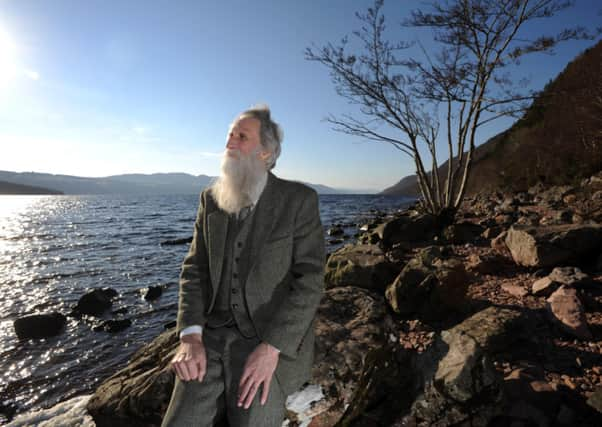Adrian Shine on making sense of the Loch Ness monster legend


The Loch Ness Monster is one of the most mysterious creatures in current Scottish folklore. More than 200,000 tourists from across the globe visit the loch each year, in the hopes of catching a glimpse of this fabled water-beast. However, scientists disregard sightings of the monster as the product of hoaxes or psychological phenomena.
But where does the idea of the Loch Ness Monster come from? And why is its appeal so widespread? Adrian Shine, a naturalist and Loch Ness expert, spoke to the Scotsman about the origins of the myth, and how it spread through popular culture.Adrian Shine says that Nessie's popularity is linked to the modern age of discovery. “As the human world shrinks,” Adrian explains, “people tend to look for something bigger than themselves, something frightening, something mysterious, or something hidden.”Throughout Queen Victoria's reign, new discoveries and scientific advances meant that we knew more about the world than ever before. “During the Victorian era,” Adrian says, “there was increased harking back to lost worlds, such as Jules Verne's 10000 Leagues Under the Sea.”
Advertisement
Hide AdAdvertisement
Hide AdThe Loch Ness monster continues to attract worldwide attention


At this time, old Scandinavian legends of sea serpents were reworked to fit this modern era. “The Loch Ness Monster is really a derivative of the sea serpent in the 18th and 19th centuries,” says Adrian.One of the first major works about the Loch Ness Monster was written by Rupert Gould. He spoke to many different people who claimed to have observed the monster, and compiled these eyewitness accounts into a book, The Loch Ness Monster and Others. One of the accounts he received was from D. Mackenzie. In the 1870s, Mackenzie had seen an object “wriggling and churning up the water”, and decided to send a letter describing the incident to Gould in 1934. “This was not long after the film King Kong,” Adrian says, “which also has the idea of a prehistoric monster.”Adrian argues that “the Norwegian sea serpent was displaced by a bulkier long-necked version – the plesiosaur.” This change took place following the discovery of plesiosaur fossils by Mary Anning on the Jurassic coast. The original investigators of the monster believed that it had been trapped in the loch, making it “amenable to study”.StudyA number of investigations and sightings followed in the 20th century, from the Dinsdale film in the 1960s, to the 1977 “Muppet” hoax. Thanks to the legend of Nessie, Adrian Shine's work in the 1980s studying the ecosystem and physics of Loch Ness gained a wider exposure than would otherwise have been possible. In 1987, Adrian organised “Operation Deepscan”, which involved a sonar curtain sweep of the loch. The operation was filmed by over 23 TV crews from overseas.
A 'sighting' of the Loch Ness monster now widely believed to have been seals
In the 1990s, Adrian concentrated on “general scientific work on the environment of Loch Ness, to see what creatures may or may not be in it.” In the 2000s, his research focused on a more “indulgent” pursuit, which involved “making sense of the anecdotal data” which had accumulated over the years.Adrian has several suggestions about the reasons behind sightings of Nessie. He argues that “waves left behind by vessels using the Caledonian Canal” can cause the illusion of a “multi-humped” creature in the water.Adrian Shine also blames the “psychology of human perception” for some of the sightings. Wind conditions can sometimes give the water of the loch a choppy appearance, with calm patches appearing dark from the shore, making it seem as though something is under the water. Also, atmospheric refraction can distort the shape and size of animals and objects on the lake.There is currently an exhibition on the loch-side, which explains some of the illusions the loch can cause, and includes Adrian's own submersible, which he has used to conduct underwater investigations.The Loch Ness Monster may be a fiction, but the story of how it became a part of modern Scottish mystery offers a fascinating into humans' need for mystery and legend. It also allowed Adrian Shine's scientific work to take centre stage, helping us learn more about our beautiful Highland landscapes.